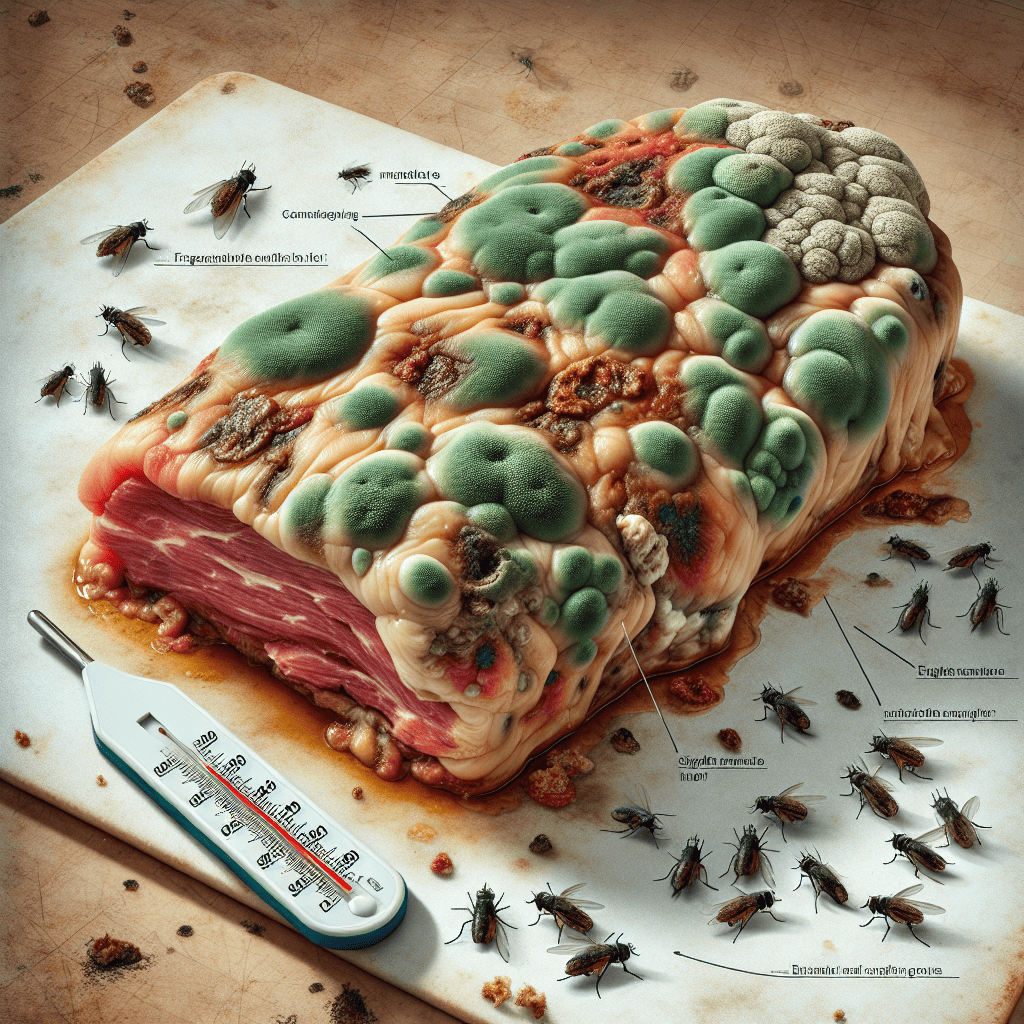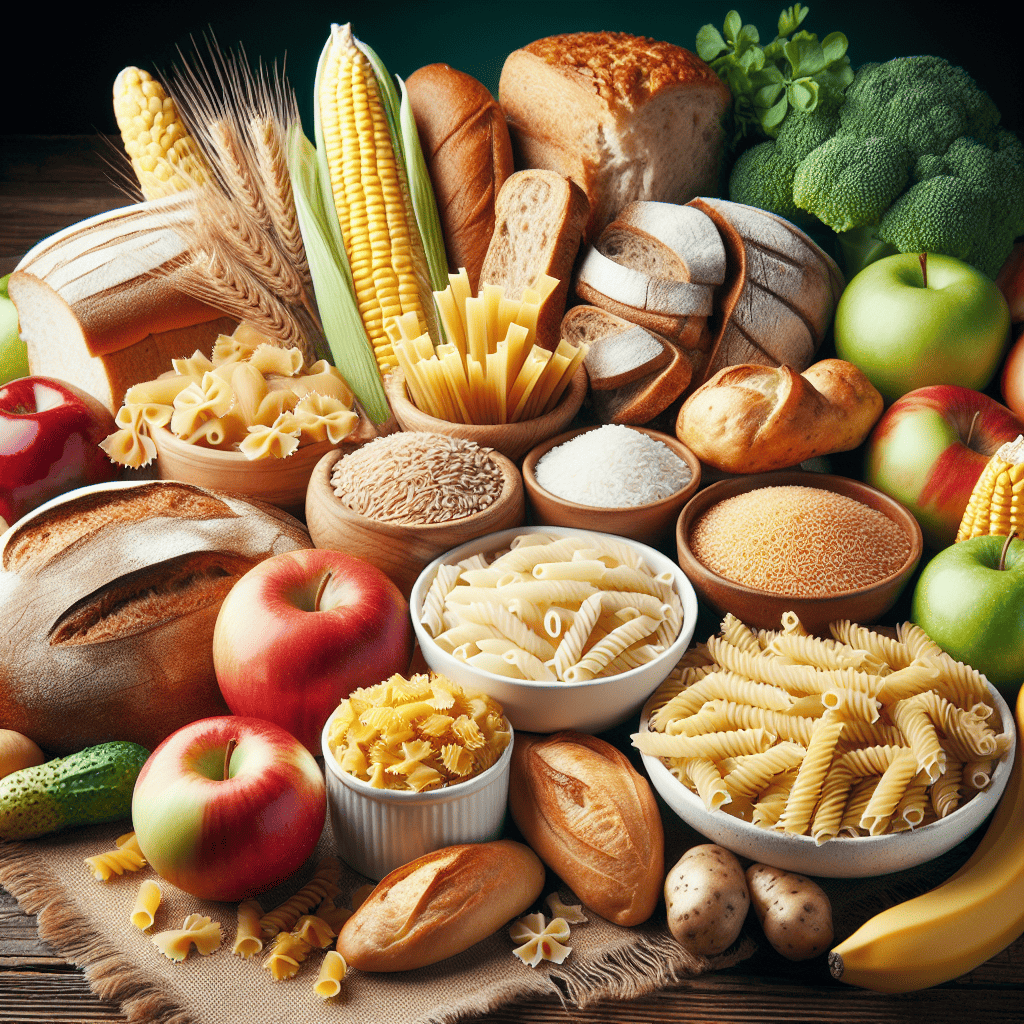Introduction: When it comes to meat consumption, it is crucial to be able to identify the signs of meat corruption to ensure food safety. This article provides a detailed overview of the most prominent signs of meat corruption, the damage caused by consuming rotten meat, steps to reduce meat corruption problems, and a summary of the key points discussed.
Table of Contents
The Change in the Color of Meat
The most prominent signs of meat corruption are changes in the color of meat.
- The Change in the Color of Meat:
The color changes in meat, such as turning brown or gray, are often indications of spoilage due to oxidation and deterioration. Oxidation occurs when meat is exposed to oxygen in the air, leading to a chemical reaction that causes changes in color. When meat turns brown, it can suggest that the myoglobin, a protein responsible for the red color in fresh meat, is breaking down. This breakdown results in the loss of the bright red hue, giving it a dull brown appearance. Similarly, gray discoloration in meat can indicate the presence of bacteria or spoilage, signifying that the meat is no longer safe for consumption.
Recognizing these color changes in meat is crucial in preventing foodborne illnesses. Consuming spoiled meat can lead to food poisoning, which can cause a range of symptoms like nausea, vomiting, diarrhea, and stomach cramps. In severe cases, food poisoning can result in hospitalization and long-term health issues. Therefore, staying vigilant and being able to identify signs of meat spoilage, including changes in color, can help avoid the risks associated with consuming contaminated products. It is essential to adhere to proper food safety practices, such as storing meat at the correct temperature, checking expiration dates, and being aware of visual indicators like color changes.
To ensure food safety and prevent the consumption of spoiled meat, it is advisable to follow guidelines for storing and handling meat properly. Refrigerate or freeze meat promptly after purchase and ensure it is stored at the correct temperatures to slow down the growth of bacteria. When storing meat in the refrigerator, keep it wrapped securely and place it in a separate container to prevent any juices from leaking and contaminating other foods. Additionally, when cooking meat, make sure it reaches the appropriate internal temperature to kill any harmful bacteria. By taking these precautions and being mindful of color changes in meat as an indicator of spoilage, individuals can protect themselves and their families from the risks of foodborne illnesses.
The Change in the Shape and Texture of Meat
Understanding how the shape and texture of meat can indicate corruption.
- The Change in the Shape and Texture of Meat:
Changes in the shape and texture of meat can serve as significant indicators of spoilage. When meat develops a slimy surface or becomes unusually soft, it is likely not safe for consumption. These changes usually suggest that harmful bacteria have begun to multiply on the meat, leading to decomposition. It is crucial to discard any meat that shows such signs to prevent foodborne illnesses. Proper handling, storage, and regular checks of the meat’s condition can help in detecting spoilage early on and avoiding potential health risks.
In addition to changes in texture, the presence of mold spots on the surface of the meat is another red flag indicating contamination. Mold is a type of fungus that can grow rapidly in moist and warm conditions, making it a common problem for improperly stored meat. Consuming meat with visible mold spots can lead to various health issues, including allergic reactions and respiratory problems. To ensure food safety, it is essential to inspect meat before cooking and discard any pieces that show signs of mold growth. Maintaining cleanliness in the storage area and following recommended storage guidelines can help in preventing mold contamination of meat products.
To maintain the quality and safety of meat products, it is important to follow proper food handling practices. This includes storing meat at the correct temperature, avoiding cross-contamination with other foods, and checking for any signs of spoilage before consumption. When purchasing meat, it is advisable to buy from reputable sources and ensure that the product is properly sealed and refrigerated. By being vigilant about the condition of meat and being aware of the signs of spoilage, consumers can protect themselves and their families from potential health risks associated with consuming contaminated meat.
The Strong Smell of Meat
Exploring the impact of the strong smell of meat in recognizing corruption.
- The Strong Smell of Meat:
The strong, unpleasant odor that emanates from spoiled meat is a distinct sign that the meat has undergone spoilage. This odor is often a result of bacterial growth on the meat, which produces certain compounds that create the foul smell. These microorganisms break down the proteins in the meat, leading to the release of compounds like cadaverine and putrescine, which are responsible for the characteristic bad smell. This spoilage is a clear indication that the meat has deteriorated and should not be consumed to avoid potential foodborne illnesses.
When meat spoils, it becomes a breeding ground for harmful bacteria such as Salmonella, E. coli, and Listeria. These bacteria can multiply rapidly in the meat, especially when it is stored improperly or at incorrect temperatures. The presence of these pathogens in spoiled meat can cause severe food poisoning if consumed. Symptoms of foodborne illnesses from spoiled meat can range from mild gastrointestinal discomfort to more serious and even life-threatening conditions. It is crucial to recognize the signs of spoiled meat, such as the strong unpleasant odor, and discard it immediately to prevent the risk of food poisoning.
In addition to the foul smell, other signs of spoiled meat include changes in color, texture, and the presence of slime or mold. Discoloration, sliminess, or a sticky texture are indications of bacterial growth and deterioration. Mold on meat is also a clear sign that it has spoiled and should be thrown away. It is essential to practice good food safety habits, such as proper storage, refrigeration, and handling, to prevent meat from spoiling. By being vigilant and attentive to the signs of spoilage, consumers can protect themselves and their families from the dangers of consuming rotten meat.
The Damage Caused by Eating Rotten Meat
Understanding the potential health risks associated with consuming rotten meat.
- The Damage Caused by Eating Rotten Meat:
Consuming rotten meat can have severe consequences for health due to the presence of harmful bacteria like Salmonella, E. coli, and Listeria. These bacteria thrive in spoiled meat and can cause food poisoning, which may result in symptoms such as stomach cramps, vomiting, diarrhea, and in severe cases, dehydration and organ damage. Food poisoning from rotten meat can be particularly dangerous for vulnerable populations such as children, the elderly, and individuals with weakened immune systems, as they are more susceptible to complications.
In addition to food poisoning, eating contaminated meat can also lead to other serious health issues such as botulism and salmonellosis. Botulism is a rare but life-threatening illness caused by the toxin produced by Clostridium botulinum bacteria, which can be present in spoiled meat. Symptoms of botulism include muscle weakness, blurred vision, difficulty speaking, and respiratory paralysis, which can be fatal if not treated promptly. Salmonellosis, on the other hand, is an infection caused by the Salmonella bacteria and can result in symptoms like fever, abdominal cramps, and bloody diarrhea. In some cases, salmonellosis can lead to complications such as sepsis and reactive arthritis.
To prevent the risks associated with consuming rotten meat, it is essential to practice proper food safety measures. This includes storing meat at appropriate temperatures, following expiration dates, and ensuring thorough cooking to kill any bacteria present. When in doubt about the freshness of meat, it is best to discard it rather than risking foodborne illness. By being cautious and informed about the dangers of eating contaminated meat, individuals can protect themselves and their loved ones from potential health hazards.
Steps to be Followed to Reduce Meat Corruption Problems
Providing practical steps to minimize the risk of meat corruption.
- Steps to be Followed to Reduce Meat Corruption Problems:
Proper storage and refrigeration of meat play a crucial role in preventing meat corruption and ensuring food safety. It is essential to store meat in the refrigerator at the right temperature, which is typically below 40°F or 4°C. Keeping meat cold slows down the growth of bacteria, reducing the risk of contamination. Additionally, meat should be stored properly in airtight containers or sealed bags to prevent exposure to other foods and environments that may harbor harmful bacteria. Regularly clean the refrigerator to avoid cross-contamination and maintain a hygienic storage environment for meat.
Cooking meat thoroughly is another key factor in reducing the chances of meat corruption. When meat is cooked at the correct temperature for the right duration, harmful bacteria like E. coli and Salmonella are killed, making the meat safe for consumption. It is important to use a food thermometer to ensure that meat reaches the recommended internal temperature. Ground meats, like beef and pork, should reach an internal temperature of 160°F (71°C), while whole cuts of meat, such as steaks and roasts, should reach 145°F (63°C) for safety. Proper cooking not only eliminates potential pathogens but also enhances the flavor and texture of the meat.
In addition to proper storage and cooking, maintaining hygiene practices and being mindful of expiry dates are essential steps in preventing meat corruption. Always wash hands, utensils, and surfaces thoroughly before and after handling raw meat to avoid cross-contamination. Inspect the meat for any unusual odor, color, or texture before cooking and discard if it appears spoiled. Check the expiry dates on meat packaging and purchase meat from reputable sources to ensure freshness and quality. Following these practices diligently can significantly reduce the risk of meat contamination and promote food safety in your household.
Summary of the Article
Summarize the main points covered in the blog post.
- Recap of Key Points:
Recognizing signs of meat corruption is essential to avoid consuming spoiled meat. The most common indicators of meat spoilage include discoloration, foul odor, slimy texture, and unusual or off-putting smells. Discoloration can manifest as a change in the meat’s color from its usual red or pink to a brown or grayish hue. A foul or ammonia-like odor is often a clear sign that the meat has gone bad. Additionally, if the meat feels excessively slimy to the touch or has a sticky residue, it is best to avoid consuming it. Any unusual or off-putting smells emanating from the meat should also raise red flags. By being vigilant and attentive to these signs, consumers can protect themselves from the potential health risks associated with consuming spoiled meat.
Understanding the consequences of consuming spoiled meat is crucial for individuals to grasp the severity of foodborne illnesses that can result from ingesting contaminated meat. Consuming meat that has spoiled or gone bad can lead to various illnesses, such as food poisoning, stomach cramps, diarrhea, vomiting, and in severe cases, even hospitalization. Bacteria such as Salmonella, E. coli, and Listeria are common culprits found in spoiled meat and can cause significant harm to one’s health. These pathogens thrive in improperly stored or contaminated meat and can multiply rapidly, increasing the risk of infection upon consumption. By understanding the potential consequences, individuals can make informed decisions about the quality and safety of the meat they consume, thereby safeguarding their health and well-being.
Implementing preventive measures is key to ensuring food safety and reducing the risk of consuming spoiled meat. Proper storage of meat in the refrigerator or freezer at recommended temperatures can help prevent bacterial growth and slow down the process of spoilage. It is essential to store raw meat separately from ready-to-eat foods to avoid cross-contamination. Cooking meat to the appropriate internal temperature, as recommended by food safety guidelines, can kill harmful bacteria and ensure that the meat is safe for consumption. Additionally, practicing good hygiene, such as washing hands and surfaces regularly during food preparation, can help prevent the spread of bacteria and contamination. By following these preventive measures, individuals can significantly reduce the chances of falling ill due to consuming spoiled meat and promote overall food safety in their households.




